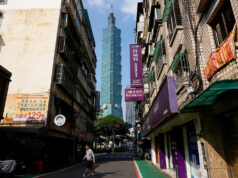Economy to shrink by 3.8% — ADB

THE Asian Development Bank’s (ADB) outlook for the Philippines has turned grim, as it now expects the economy to shrink by as much as 3.8% this year.
At the same time, developing Asia is projected to grow at its slowest pace in nearly six decades, as the economic fallout from the coronavirus disease 2019 (COVID-19) pandemic widens.
In its June supplement to the Asian Development Outlook (ADO) 2020, the ADB slashed its gross domestic product (GDP) forecast for the Philippines this year to -3.8% from the 2% growth estimate given in April. This is lower than the 2-3.4% contraction projected by economic managers.
“The forecast for 2020 is revised down to 3.8% contraction because household consumption and investment have slowed more than expected. The contraction in the global economy will continue to drag external trade, tourism and remittances,” the ADB said in the report.
If realized, a 3.8% full-year contraction will be the worst since 1985 when the economy shrank 6.9% according to data from the Philippine Statistics Authority.
The government implemented strict lockdown measures in mid-March to contain the COVID-19 outbreak, which led to a drastic decline in domestic economic activity. As a result, the economy contracted by 0.2% in the first quarter, with an even worse second quarter expected.
The ADB took note of flat household consumption, weak imports and exports, as well as a plunge in investment. Only government spending rose during the first quarter. A broad contraction was also seen across all major sectors — services, industry and agriculture.
For 2021, the ADB kept its 6.5% growth forecast for the Philippines, “supported by public infrastructure spending and anticipated recovery in consumer and business confidence.”
The Philippines’ projected economic contraction is deeper than the Southeast Asian regional average of -2.7%. The economies of Thailand (-6.5%), Singapore (-6%), Cambodia (-5.5%) and Malaysia (-4%) are all expected to shrink this year, along with Timor Leste (-3.7%), Indonesia (-1%) and Laos (-0.5%).
Only Vietnam (4.1%), Myanmar (1.8%) and Brunei (1.4%) are seen to post growth, according to ADB.
Washington-based World Bank earlier trimmed its 2020 forecast for the Philippines to -1.9% from its 3% baseline projection in April.
Other institutions that already downgraded their outlook for the country include International Monetary Fund which now sees the economy shrinking by 3%; Fitch Ratings with a -4% projection; S&P Global Ratings with -0.2% forecast and Moody’s Investors Service with -2.5% projection.
RISKS REMAIN
Developing Asia, composed of 45 countries in the Asia-Pacific region, is now projected to grow by 0.1% this year, the lowest since 1961. ADB in April gave a 2.2% full-year growth projection for the region.
“Economies in Asia and the Pacific will continue to feel the blow of the COVID-19 pandemic this year even as lockdowns are slowly eased and select economic activities restart in a ‘new normal’ scenario,” ADB Chief Economist Yasuyuki Sawada was quoted as saying in a statement.
The ADB expects the region’s growth to rebound to 6.2% in 2021, mainly due to high base effects.
“While we see a higher growth outlook for the region in 2021, this is mainly due to weak numbers this year, and this will not be a V-shaped recovery. Governments should undertake policy measures to reduce the negative impact of COVID-19 and ensure that no further waves of outbreaks occur,” Mr. Sawada said.
Downside risks to its forecasts for Asia persist as the COVID-19 pandemic “may return in multiple waves in the coming period, as happened during the 1918-1919 global influenza pandemic,” ADB said.
“Sovereign and financial crises cannot be ruled out, and social unrest is possible. A further risk is renewed escalation in US-PRC trade tensions,” it added.
Meanwhile, the ADB predicts inflation for developing Asia to ease to 2.9% in 2020 from its earlier 3.2% projection, “reflecting depressed demand and lower oil prices.” Inflation is expected to slow to 2.4% in 2021.
For Southeast Asia, the inflation forecast was revised to 1% this year and to 2.3% in 2021.
ADB kept its inflation projection for the Philippines at 2.2% this year and 2.4% next year.
“In the Philippines, inflation edged lower in April, averaging 2.6% year on year in the first 4 months of 2020. Inflation forecasts for this economy are maintained, however, as lower oil prices offset possibly higher prices for food from feared domestic supply disruption,” ADB said. — B.M.Laforga




